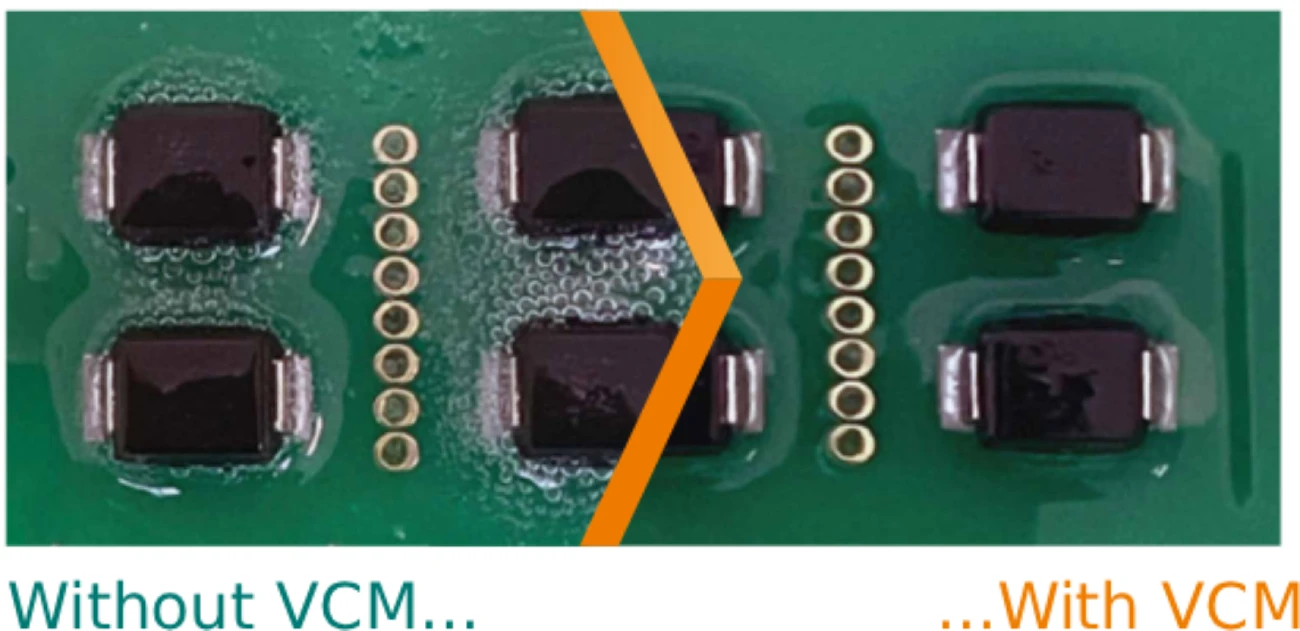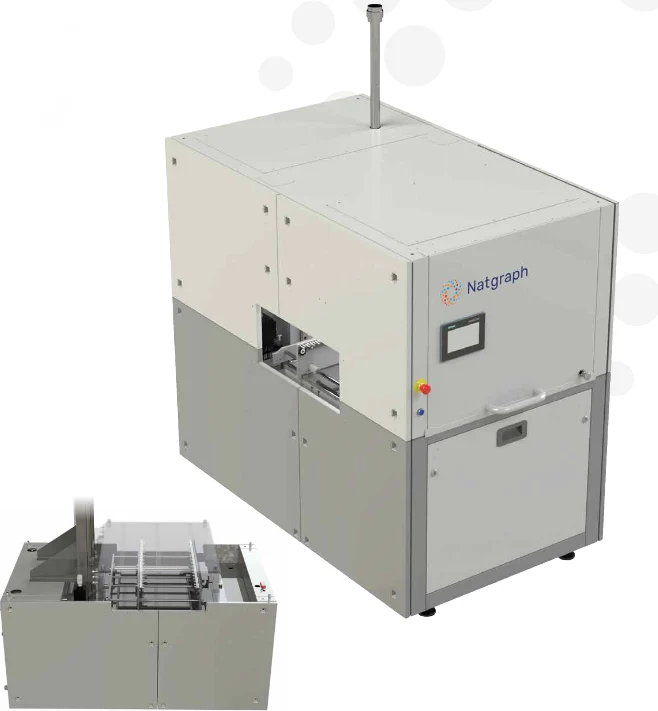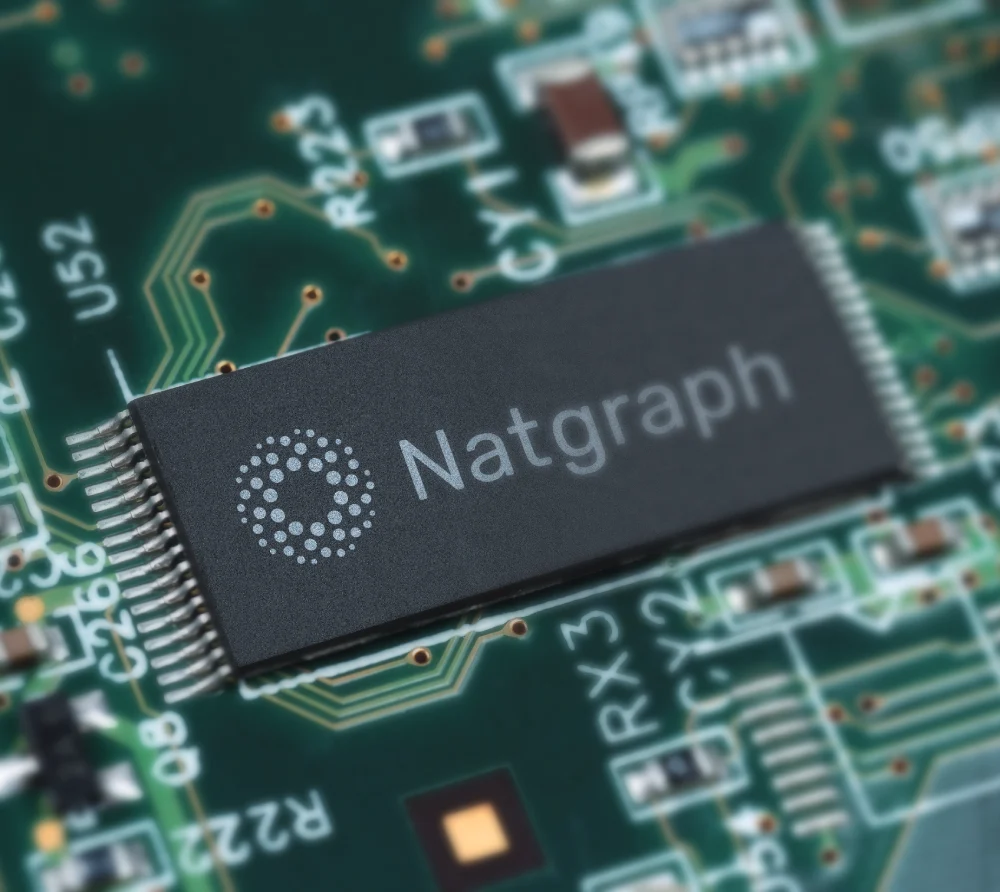In conformal coatings, even the smallest bubble or void formed during dispensing can lead to a big problem further down the line.
So, we’ve built a smarter way to prevent them, before curing takes place.
Revolutionising the Conformal Coating Process
Natgraph’s Vacuum Conditioning Module (VCM) is an innovative, customisable, multi-stage, in-line vacuum degassing solution that allows PCB manufacturers to change how they approach coating quality.
It’s now possible to de-gas all types of conformal coatings, UV-curable, solvent-based, or water-based, equally effectively, in-line.

The VCM is designed to eliminate one of the most common and costly coating defects: air entrapment, which causes bubbles and voids, to achieve smooth, consistent, ‘bubble-free’ coated surfaces.
The result: Uniform, defect-free coatings that improve the overall reliability of the finished PCB assembly.
So, your components are better protected, and your printed circuit boards perform reliably and last longer, even when you are applying water-based conformal coatings.
Water-based conformal coatings are more prone to ‘bubbling’.
The VCM supports the transition to safer, water-based coatings – helping to protect your products, your people, and our planet.
Because we believe, performance shouldn’t cost the earth.
How the VCM Works
Here’s an insight into how the Vacuum Conditioning Module (VCM) does what it does so well.
During the dispensing phase of the conformal coating process, tiny pockets of air can become trapped in the coating layer applied to printed circuit boards (PCBs), leading to bubbles, voids, and potential weak spots.
The VCM uses precisely controlled vacuum ‘conditioning’ to draw out the air trapped in the coating, creating a perfectly smooth, even, and continuous, ‘bubble-free’ barrier that shields the electronic components from moisture, dust and chemicals exposure, as well as thermal and mechanical stress.
After the conformal coating stage, the PCB is automatically transferred into the VCM and positioned precisely within the chamber. Once in place, a vacuum enclosure lowers over the PCB and conveyor section to create a sealed processing environment.
The system then draws the chamber pressure down from atmospheric conditions to a programmable vacuum level, adjustable anywhere between ambient pressure and -950 mbar.
These settings are fully configurable through the recipe editor, allowing the creation of multi-stage degassing profiles. Each stage can define a specific vacuum level, duration, and sequence, enabling fine control over how trapped air is extracted from the coating.
By applying controlled vacuum levels in multiple stages, the system effectively removes air bubbles and voids that can form during the dispensing stage of the conformal coating process. This ensures uniform, defect-free conformal coating and improves the overall reliability of the finished assembly.
Once the programmed cycle is complete, the chamber is gradually repressurised in a managed sequence to return to atmospheric pressure. This controlled equalisation prevents material disturbance or damage that could occur from rapid air ingress. The chamber then retracts automatically, and the PCB exits via the conveyor for the next stage of processing.
The vacuum process works in conjunction with chamber temperature and dwell time settings—each of which can be finely tuned to match the specific material properties of the coating being used.
The key to achieving optimal coating degassing is the ability to finely balance the vacuum level, temperature, and the time the PCB dwells in the VCM to create the perfect conditions for degassing, without prematurely starting the curing process.
Following degassing in the VCM, the conveyor transports the PCB to the next stage in the production process.
Along with the VCM, Natgraph offers a full range of energy-efficient curing, drying, and preheating modules designed to integrate seamlessly with subsequent processes in your conformal coating process line.
From standard modules to fully customised designs, available as a standalone unit or part of a fully automated manufacturing line, every Natgraph system is engineered to perform and built to last.
Designed for All Conformal Coatings
We’ve designed the VCM to integrate seamlessly with any conformal coating process and it’s fully compatible with all common coating chemistries:
UV-curable, solvent-based, and water-based.
Water-based coatings, whilst safer for your people and more environmentally friendly, are notoriously more prone to ‘bubbling’.
With Natgraph’s VCM, that’s no longer a problem.
Through continuous innovation, we’ve engineered a degassing solution that makes safer, more sustainable conformal coatings a viable option in electronics manufacturing.
As with all our conformal coating range of equipment, the VCM interfaces seamlessly with upstream and downstream equipment in a SMEMA-compliant production line.

VCM Key Features:
- Vacuum chamber
- Adjustable stepped vacuum profile
- Integrated heating
- Automated control
- Siemens PLC with HMI
- Remote diagnostics
- Siemens PLC with HMI
VCM Key Benefits:
- Eliminates bubbles and voids in conformal coatings for smooth, defect-free finishes
- In-line, automated, customisable, and multi-stage degassing process
- Adjustable vacuum, temperature, and dwell time enable precise control for perfect results
- Compatible with all coating types: UV-curable, solvent-based, and water-based
- Enables the move to safer, more sustainable water-based conformal coatings
- Improves PCB reliability and lifespan by ensuring consistent coating quality
- Adjustable conveyor width allows for a variety of PCB sizes
- Full integration into existing conformal coating lines
- Simple recipe management
- Safe and easy access for inspection and maintenance

You Coat. We Cure.
We Care.
The VCM is about more than engineering innovation and energy efficiency.
It’s a commitment to doing things better.
This is about smarter manufacturing using safer, kinder materials.
If you’re ready to eliminate bubbles to improve the reliability of your PCBs and make the move to a more sustainable conformal coating process, let’s talk.
Discover how Natgraph’s VCM, and all the other modules in our conformal coatings range, can help perfect your coating process without compromise to your performance, your people, or our planet.
You Coat. We Cure.
Discover what’s possible with Natgraph
NEW!
See our brand-new brochure for details of our full range of Conformal Coatings and Underfill Solutions
Engage with our exciting, new interactive Vacuum Conditioning Module (VCM) animation

